
For at least 2 years Ken Brown and I have been thinking about making a winter birding trip to the Southeast corner of Washington. Several reasons have motivated us to visit this really cold and desolate area in winter, first of course that several species of gulls can be found there in winter more regularly than elsewhere in WA. Glaucous Gull and Lesser Black-backed Gull are frequently seen in Asotin County. In addition, since eBird keeps such great track of bird sightings, and since neither of us had been to any of the three counties in SE WA since we started using eBird in 2012, our profile page showed a “big grey hole” lacking the color of having seen birds in Asotin, Garfield and Columbia counties. This year two birding friends, Ryan Wiese and Bryan Hanson asked to join us on the trip, and that was the motivation to make it happen this year.
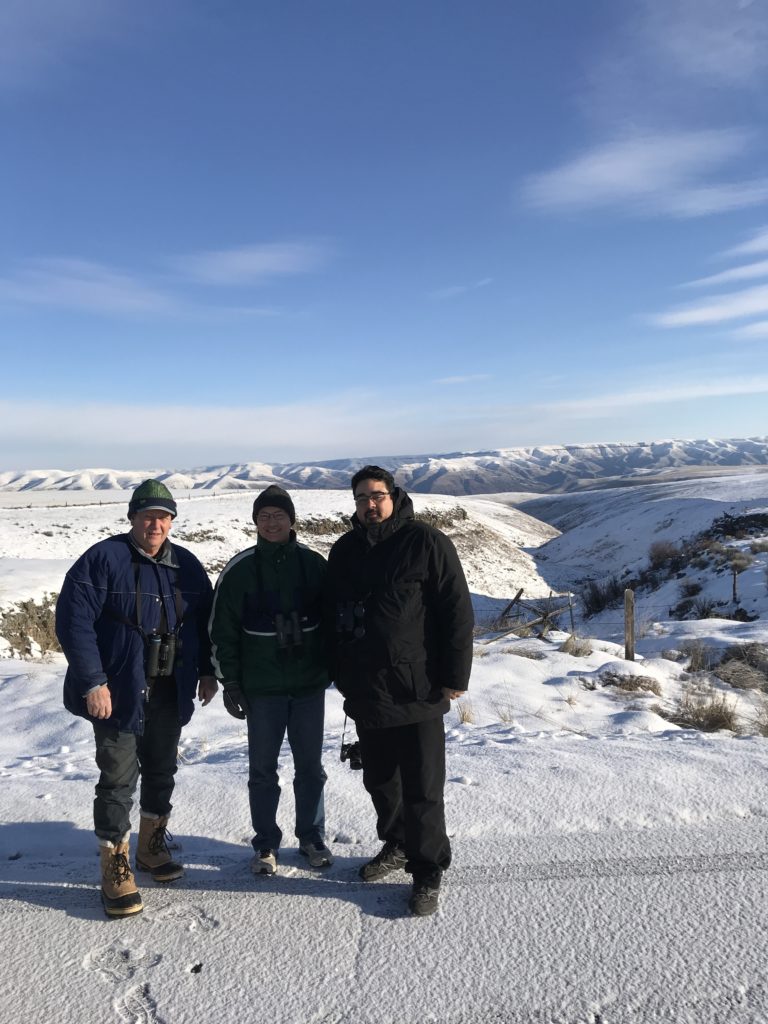
We took off on Friday Feb 15th at 6 AM and headed over Snoqualmie Pass. The roads had finally been cleared from the recent very heavy snow, and we got through uneventfully. After crossing the Columbia on I-90 we headed southeast on Hwy 26 at Vantage toward Othello. Bryan had not birded much in the areas near our 3-county destination, so we made minor quick stops and several travelling lists to fill in a few empty counties for him. We made a quick stop to look at Gray Partridge in Adams County, a new county bird for all of us sighted from the car off Hwy 26.
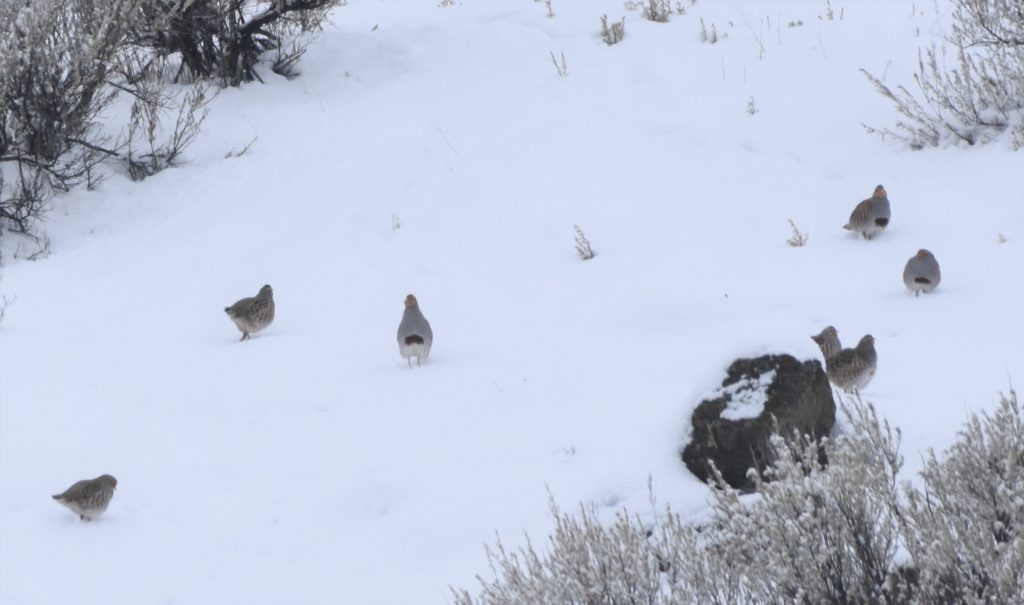
From Hwy 26 we headed southwest on Hwy 261 and in Franklin County started to see our first birds of the open country including Gray Partridge again, Ringed-neck Pheasant, Northern Shrike and Rough-legged Hawk off Hwy 261. We also spotted a Short-eared Owl flying near Prescott. (see image above)
Finally we crossed the Snake River bridge at Lyon’s Ferry and started birding in Columbia County at the marina. Highlights there were a Golden Eagle, and we managed to see 26 species there, mostly waterfowl and common land birds. At the Texas Rapids Recreation Area on the road to Little Goose Dam we enjoyed great looks at American Tree Sparrow, a tough bird to find in WA. This one was very obliging for photos.
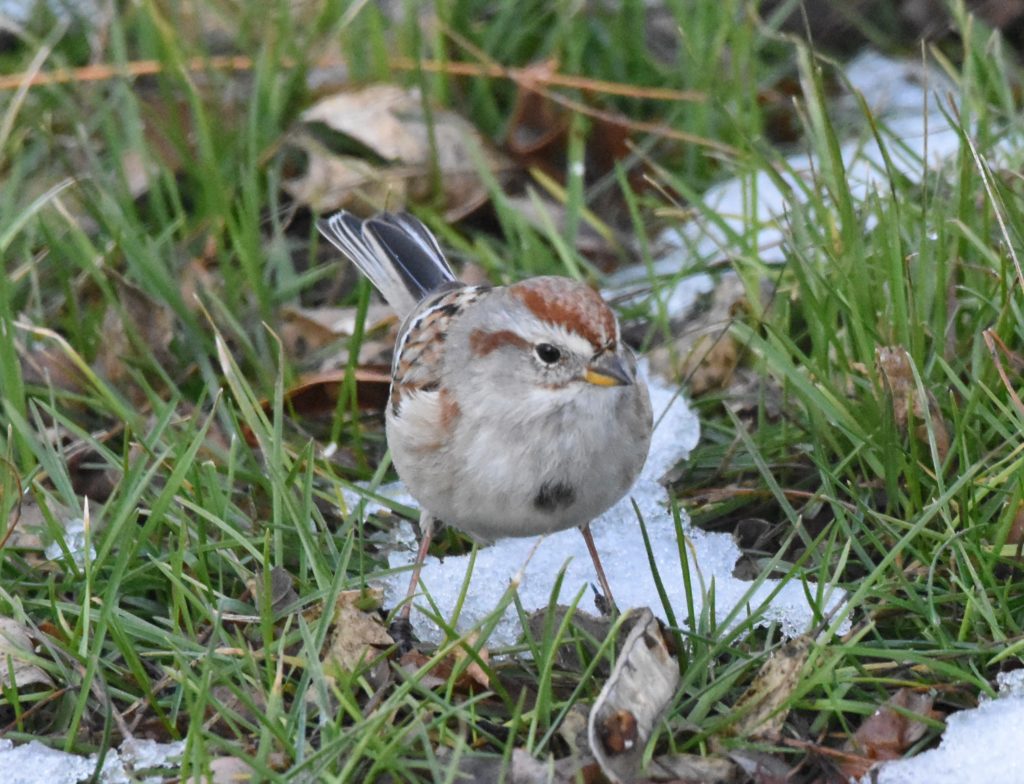
Little Goose Dam itself was a bust, and we headed to Starbuck. City birds were noted there, but not much exciting. As we headed towards Lewis & Clark Trail Park we started to see nice flocks of Lesser Goldfinches. For the rest of the trip we came Lewis & Clark Trail Park in the afternoon was fairly ordinary, but we came back after dinner to go owling, and got a Western Screech Owl calling as well as two Great Horned Owls hooting. WESO was a first-of-year species for all of us.
Friday night we stayed at the Best Western in Dayton, and Saturday took Tuccannon Road for about 2 hours in Columbia County before entering Garfield County. The Subaru performed beautifully on these snowy roads, and we added our first Wild Turkey of the trip as we headed up the slopes.
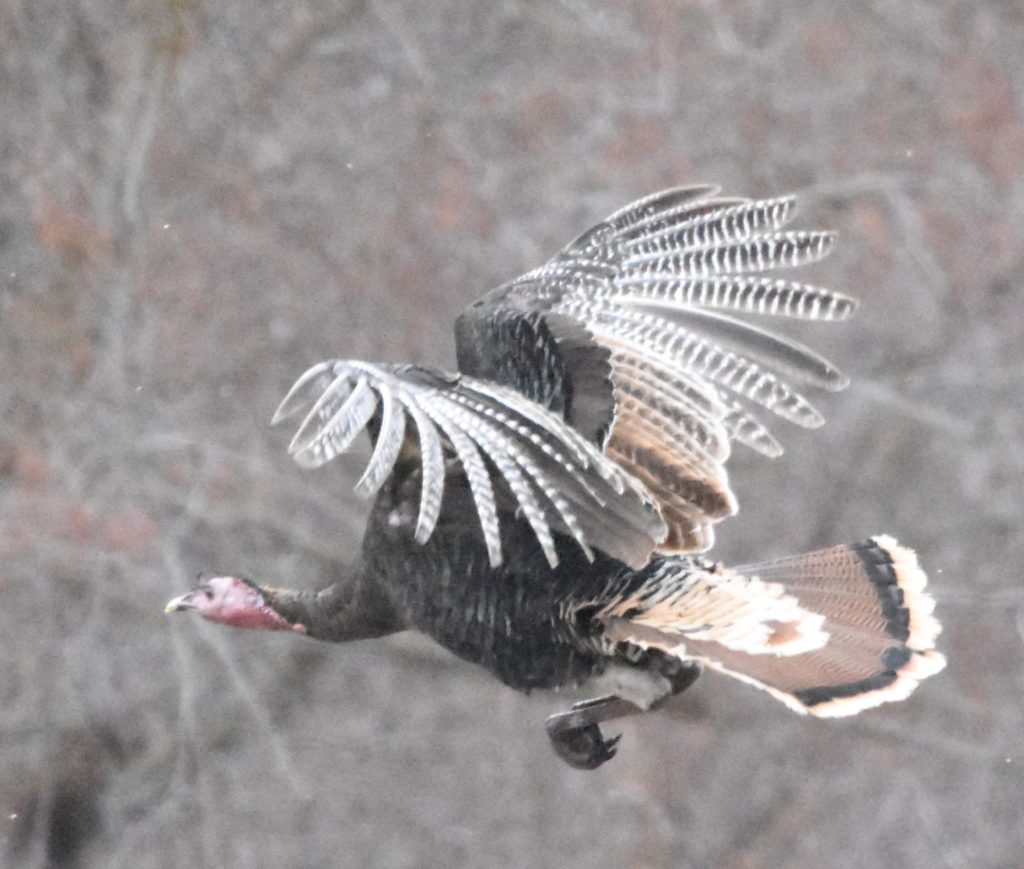
Entering Garfield County about 8:30 AM and Ryan spotted a hidden Great Horned Owl in a thickly branched tree, for a good county bird. We came down out of the highlands into the small city of Pomeroy, finding very little at the city park, and we headed to the part of Central Ferry Canyon in Garfield County. This was one of our birdiest stops of the trip, with 34 species found, including a Lincoln’s Sparrow and many waterfowl. This area is a backwater off the river, and has quiet waters for de staucks, geese, grebes and coots to feed and roost in protected waters.

At a Habitat Management Area off Willow Gulch Road we found a marshy area and looked hard for Swamp Sparrow without success but managed our only Marsh Wren of the trip, along with Varied Thrush and a variety of land birds. At a nearby river overlook we got excellent looks at a few Western Grebes and one well marked Clark’s Grebe. Being county listers we submitted a one-bird checklist as we spotted an American Crow from the car while driving. Common Ravens are much more common than crows in this area, so it was a county tick.
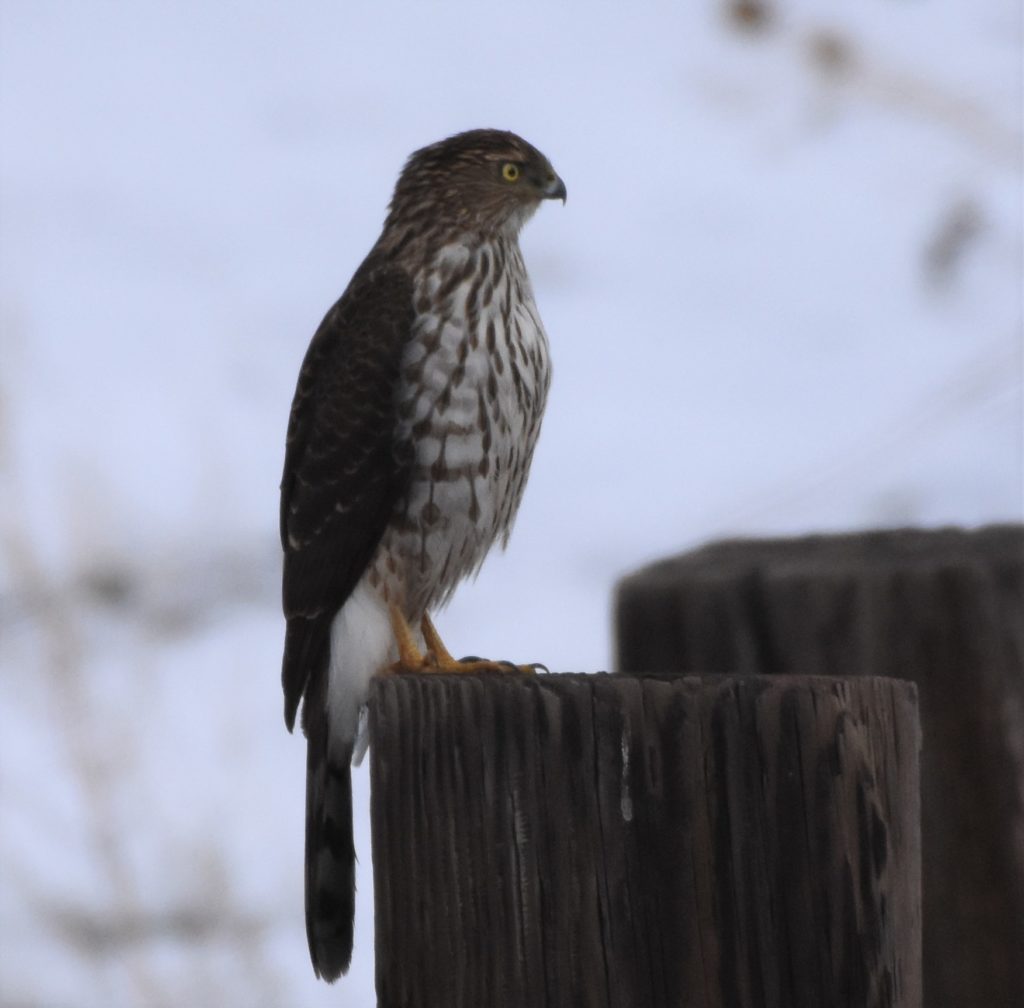
Late in the day, almost as an afterthought Ken remembered reading about Sweeny Gulch Road, so we decided to drive up and see what we could find. We found the gallinaceous bird capital of Garfield County. Over a drive of about 2 miles we saw and counted at least 98 Gray Partridge and 42 Ring-necked Pheasant. It seemed that they were just everywhere in the snowy fields. Finishing the day strongly, Ryan spotted what he thought was a Chukar driving onHwy 12 into Clarkston, just before leaving Garfield County into Asotin County. We barely could get off the Hwy, but managed to stop and determine that there were both Chukar and Gray Partridge on the rocky slopes across the highway.
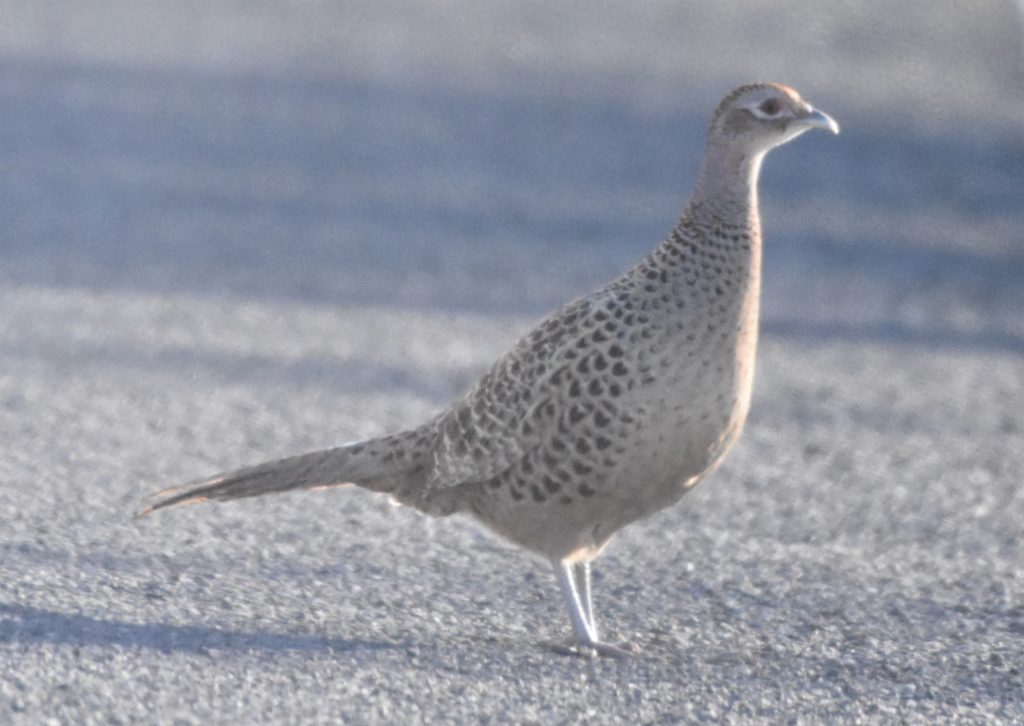
We went crossed into Asotin County and made our last stop of the day at Chief Timothy Park, a large park on the Snake River, where we picked up our first Asotin County birds, mostly common waterfowl, robins, a few sparrows, etc. We were amazed by the quantity of owl pellets under seemingly every tree, and as it was nearly dark waited as the sun set, to hear two Great-horned Owls hooting. We stayed the next 2 nights at the Best Western in Clarkston. Good rooms with a 5 AM breakfast!
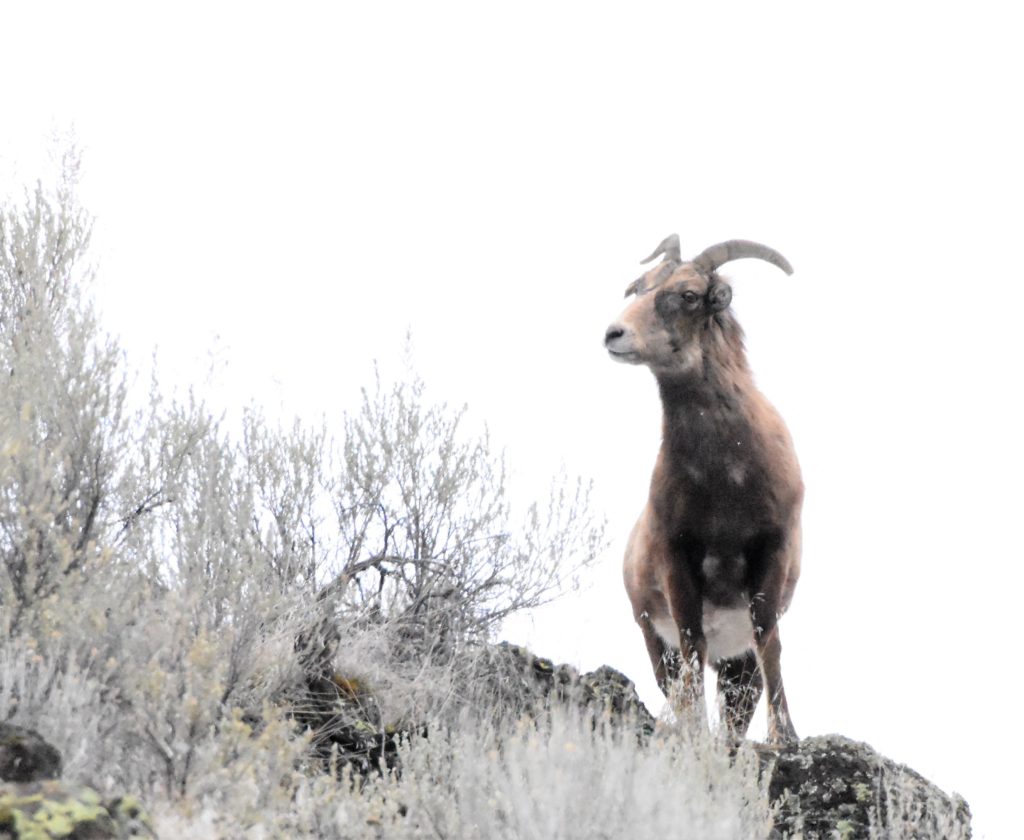
We started our morning at Swallow’s Park along the river, and accumulated a list of 24 species, but none of the uncommon gulls we were hoping to see. For much of the rest of the day we birded the high country on Asotin Creek Road and Cloverland Road. Asotin Creek Road yielded Wild Turkey, at least one Harlan’s race of Red-tailed Hawk, lots of Northern Harriers and RTHA, California Quail, and at least 16 Rocky Mountain Big Horn Sheep.
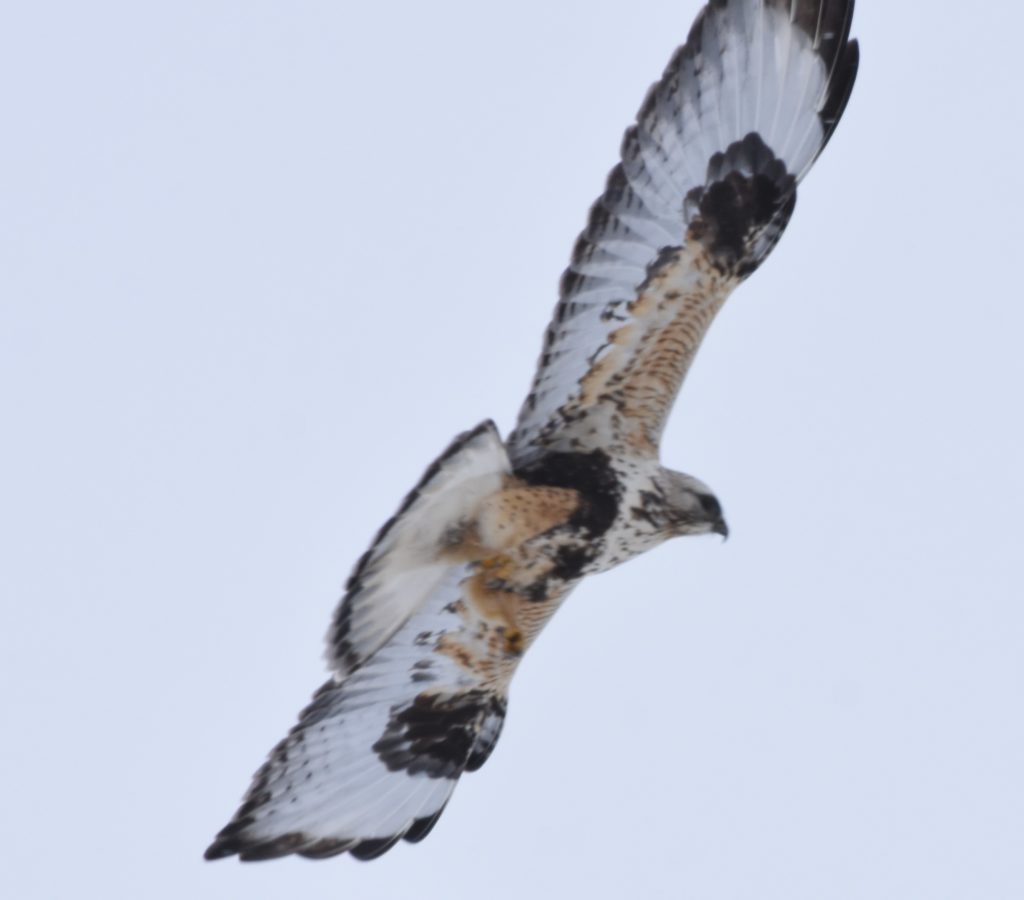
The Cloverland Road side got up into much snowier wheat fields, and as we got up onto the plateau Rough-legged Hawks replace most of the Red-tailed Hawks, we had one Golden Eagle, and vast snowy vistas. IN the afternoon we visited areas around Clarkston, including the wonderfully named Hell’s Canyon Marina. A Redhead (duck) was the highlight there along with a Belted Kingfisher for the county.
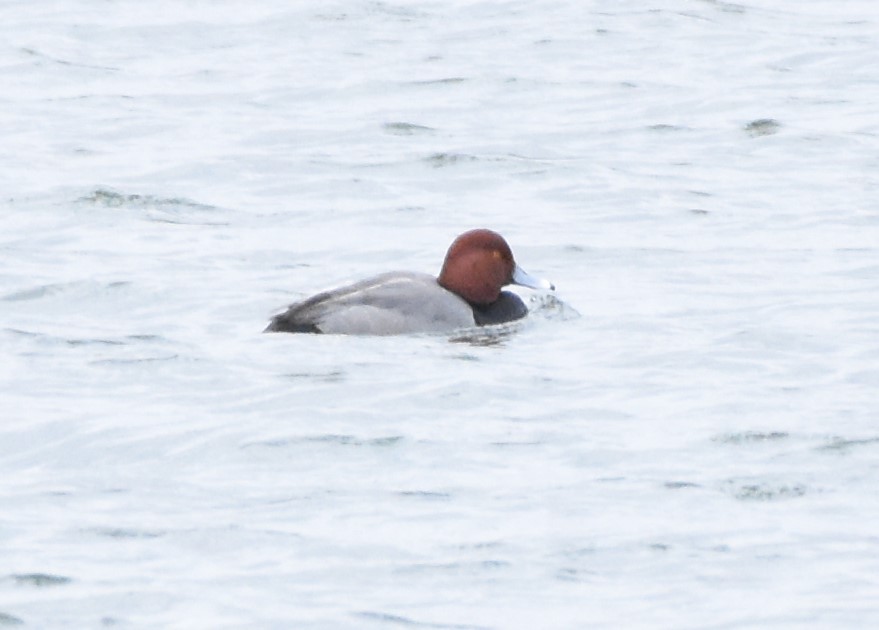
We had an hour to kill before heading back up to Cloverland Road at dusk hoping for a Short-eared Owl. We spent the time at Chief Looking-glass Park along the river, and found several nice county-first species including Gadwall, Hooded Merganser, Ring-necked Duck, and Common Goldeneye.
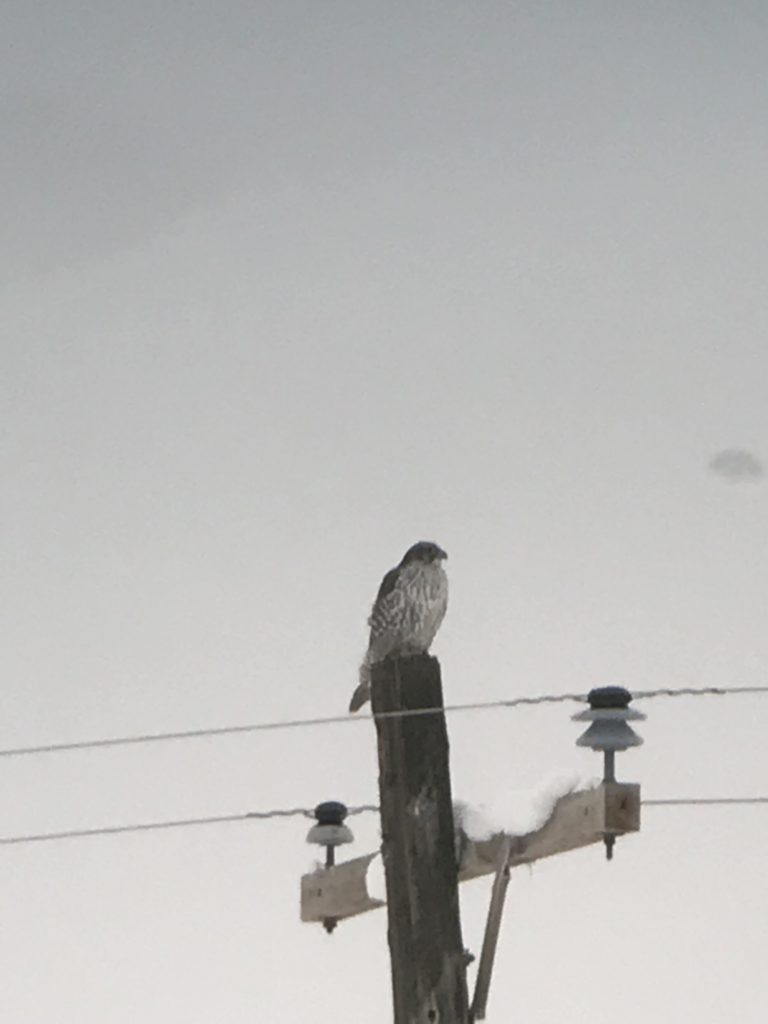
One more time we headed up Cloverland Rd hoping for a Short-eared Owl foraging at dusk, but instead Ken spotted the bird of the trip. We stopped to see what a Red-tailed Hawk was feeding on beside the road. As we drove up two ravens were harassing a RTHA who was eating something beside the road. We stopped, and got out to look. The hawk had been picking at the spine and wing remains of what appeard to be a Ring-necked Pheasant. Just as we started to leave Ken spotted a distant raptor on a power pole, and instantly suspected a Gyrfalcon. He later admitted that the RNPH remains did not make him suspect the Gyr, though it probably should have been a clue to all of us, but we stopped, set up scopes, and viewed a gorgeous adult gray-morph Gyrfalcon. We watched for a couple of minutes, and then it very quickly flew across the road ahead of us and disappeared, seemingly just to show us how incredibly fast they can fly. No Short-eared Owl, but no complaints from this group.
On the way back to town a stop at Chief Looking Glass Park gave us our first Barn Owl of the trip, and a first-of-year species for all of us. It screamed and flew out of the wooded area at the end of the parking lot opposite the church.

On our last day we had the primary goal of birding the Asotin County Regional Landfill. This is a throw-back dump, still open with garbage exposed, and gulls congregate there to feed. It did not open until 8 AM so we drove out onto Peola Road hoping for open field species. We had great success, picking out at least 4 Lapland Longspurs and two Snow Buntings from the huge flocks of Horned Larks. The LALO were FOY birds for all, and really a tough bird to find many years in WA. The SNBU were of course county firsts for all.

At the landfill we spent about an hour scoping through gulls. The Glaucous Gull was easy, the biggest whitest gull among about 250-300 gulls there. No Lesser Black-backed Gull was located, but California, Ring-billed, Herring, and a few Iceland (Thayer’s type) Gulls were studied and enjoyed.
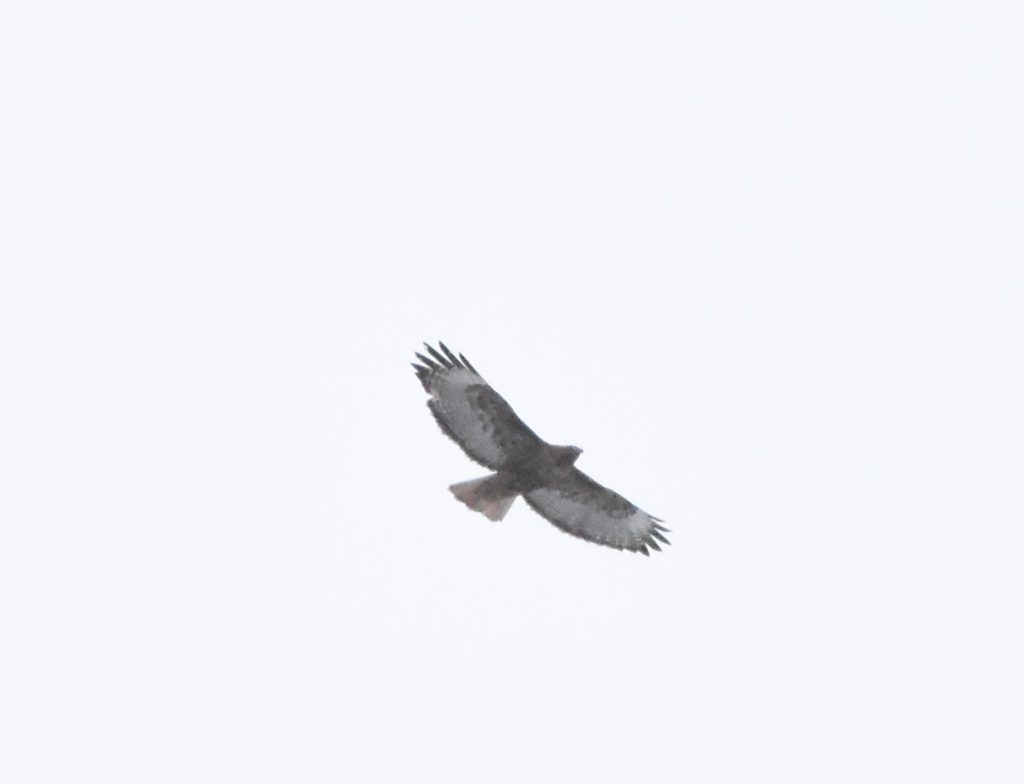
We decided to drive home along the Columbia hoping to relocate Ferruginous Hawks that had been seen in Dallesport near the airport earlier this year, but had no luck. We got home about 7 PM, tired, but very pleased with a great trip.

Wow! So sorry I missed it! A little different than your usual suspects, but some really great birds and beasts!